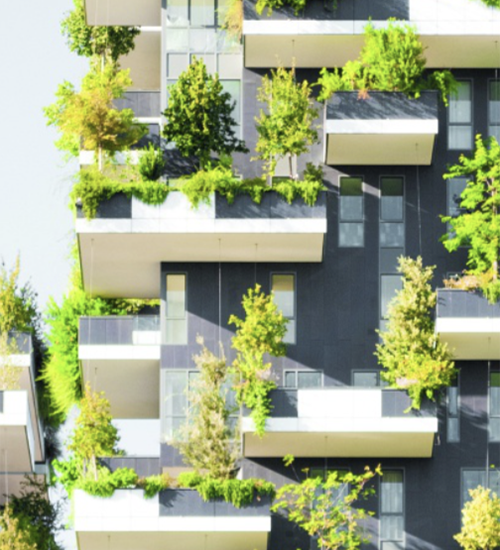"Green Construction" Economy, Utility, Durability & Comfort.
Feb 08, 2018
Green Building processes that are environmentally responsible & resource-efficient throughout a building's life-cycle: planning to design, operation, construction, maintenance, renovation & demolition.
Green Building planning to design, construction, operation, maintenance, renovation, & demolition. This requires close cooperation of the contractor, the architects, the engineers & the client at all project stages. The Green Building practice expands & complements the classical building design concerns of economy, utility, durability, and comfort.
Key Features: a) Maximum use of natural lights, min use of fuel, electricity, conservation of water b) Min Environmental impact on air, water pollutions & land filling c) Indoor environment quality & occupational health d) Use of environment Friendly materials in all items we design, Maximise reuse / recycle of industrial waste (material conservation).
- Selection of project site (closer to public transport), infrastructure connectivity, optimum distance from raw material / finished goods supplies & no change in topography of location.
- Water Conservation - Gardening with water conserving tropical plants, Drip irrigation, 100% buildings roof rain water harvesting, water percolation pits on storm water, use of waterless urinals, complete 100% reuse of waste water treatment plant treated water, special taps & fittings which gives over 30% water conservation by design.
- Use of natural lights to reduce lighting, use of LED bulbs, use of solar or wind energy, use of lighting modelling for optimizing watts / sq meter basis specific requirements on lux levels.
- Use of insulated roof with specific galvalume roof with >75 SRI value (high heat reflection).
- Use of special 6-12-6 glasses which allows max light transmittance but has 25% U value = heat transfer compared to normal glass.
- Use of Power Plant waste carbon powder (normally put to landfill) in Construction materials in special premixes, use of low density blocks which conserves material & provides heat insulation.
- Use of Steel components & raw materials for site from vendors closer to site giving transport fuel advantage as well as rates advantage and boost to economy of local area.
- Low VOC paints on at least 95% of available surface, Furniture made up of Green certified vendors / makes, specially ensuring use of bamboo which is having lowest lifecycle amongst tress.
- Design & use of Screw chillars & compressors with COP above 5 & HVAC system with CFC/ HCFC free refrigerant gases, use of gas as cleaner fuel for Boilers.
- Use of special scrubbers for air quality control & suitable air curtains / air locks on shopfloor entrances.
- Employee related actions: Use of Breakout spaces, Amphitheater, Gym, Canteen with adequate change rooms & ventilated areas.
With this construction cost which is one time goes up between 5- 10% depending on targeted level and building designs and energy conservation 20-28% is achievable by design compared to ASHRAE stds ((American Society of Heating, Refrigerating & Air-Conditioning Engineers)as defined by IGBC-LEEDS, ROI varies between 6 to 10 years depending in deployment .


